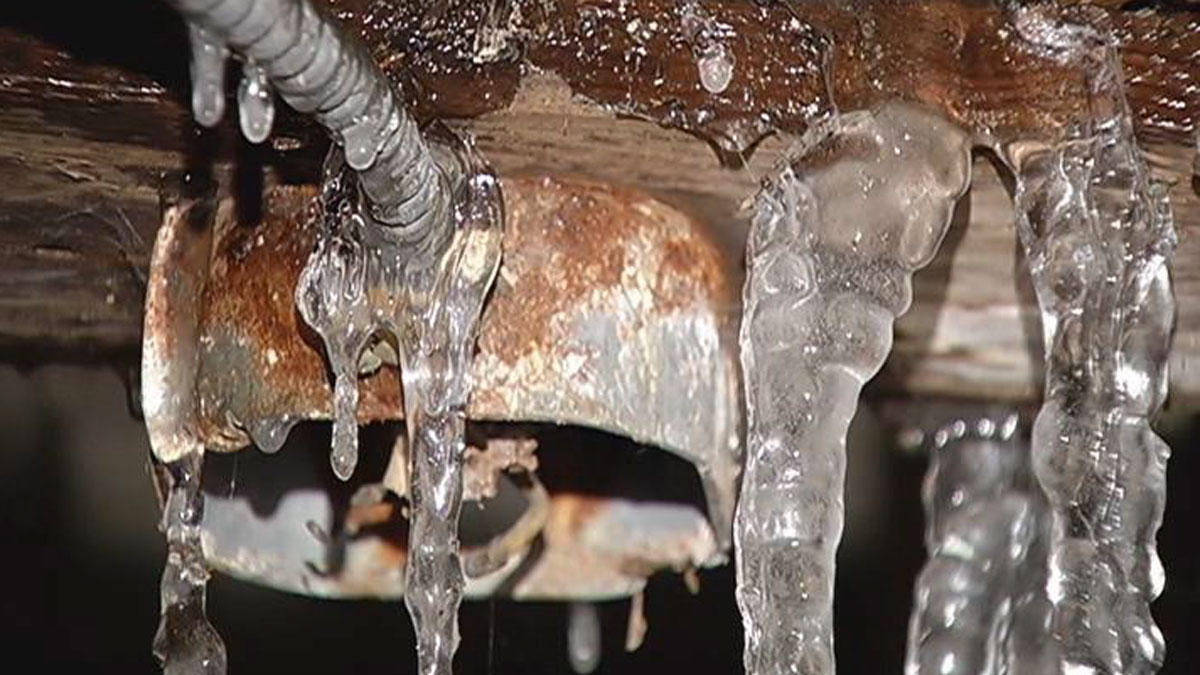Tips to Defend Plumbing System from Cold Weather: Essential Tips
Tips to Defend Plumbing System from Cold Weather: Essential Tips
Blog Article
They are making a number of great annotation related to How to prepare your home plumbing for winter weather as a whole in the article directly below.

Cold weather can damage your plumbing, specifically by freezing pipelines. Here's how to prevent it from occurring and what to do if it does.
Introduction
As temperature levels decline, the risk of frozen pipelines boosts, potentially leading to pricey repair work and water damage. Comprehending how to stop icy pipelines is vital for homeowners in chilly environments.
Understanding Frozen Pipelines
What causes pipelines to freeze?
Pipes freeze when exposed to temperatures below 32 ° F (0 ° C) for prolonged durations. As water inside the pipes ices up, it expands, taxing the pipe walls and possibly triggering them to break.
Threats and problems
Frozen pipes can bring about water disturbances, residential property damage, and expensive repairs. Burst pipes can flooding homes and trigger considerable structural damages.
Indications of Frozen Pipeline
Identifying icy pipes early can avoid them from breaking.
Exactly how to recognize icy pipes
Try to find reduced water flow from faucets, uncommon smells or sounds from pipes, and noticeable frost on revealed pipelines.
Prevention Tips
Insulating vulnerable pipes
Cover pipelines in insulation sleeves or make use of heat tape to protect them from freezing temperatures. Concentrate on pipelines in unheated or outside locations of the home.
Heating techniques
Maintain interior spaces appropriately heated up, particularly areas with plumbing. Open up cupboard doors to permit cozy air to distribute around pipelines under sinks.
Shielding Outside Pipes
Yard tubes and outside taps
Disconnect and drain garden pipes before wintertime. Mount frost-proof faucets or cover outside taps with insulated caps.
What to Do If Your Pipes Freeze
Immediate actions to take
If you believe frozen pipelines, keep taps open up to eliminate stress as the ice melts. Make use of a hairdryer or towels soaked in hot water to thaw pipelines slowly.
Long-Term Solutions
Architectural adjustments
Take into consideration rerouting pipes far from exterior walls or unheated areas. Add additional insulation to attic rooms, basements, and crawl spaces.
Updating insulation
Purchase top quality insulation for pipes, attic rooms, and walls. Appropriate insulation aids keep regular temperatures and lowers the risk of frozen pipelines.
Verdict
Avoiding frozen pipelines calls for aggressive actions and quick responses. By recognizing the causes, signs, and safety nets, homeowners can protect their plumbing throughout cold weather.
6 Proven Ways to Prevent Frozen Pipes and Protect Your Home
Disconnect and Drain Garden Hoses
Before winter arrives, start by disconnecting your garden hoses and draining any remaining water. Close the shut-off valves that supply outdoor hose bibs and leave the outdoor faucet open to allow any residual water to drain. For extra protection, consider using faucet covers throughout the colder months. It’s also important to drain water from any sprinkler supply lines following the manufacturer’s directions.
Insulate Exposed Pipes
Insulating your pipes is an effective way to prevent freezing. Pipe insulation is readily available at home improvement stores and is relatively inexpensive. Pay close attention to pipes in unheated areas such as the attic, basement, crawl spaces, or garage. Apply foam insulation generously to create a buffer against the cold. You can also wrap your pipes in heat tape or thermostat-controlled heat cables for added warmth.
Seal Air Leaks
Inspect your home for any cracks or openings that could let in cold air. Seal any holes around the piping in interior or exterior walls, as well as the sill plates where your home rests on its foundation. Additionally, make sure to keep your garage door closed unless you’re entering or exiting. Leaving it open creates a significant air leak that can lead to frozen pipes.
Allow Warm Air Circulation
During cold snaps, it’s essential to allow warm air to circulate evenly throughout your home. Leave interior doors ajar to promote better airflow. Open kitchen and bathroom cabinets to help distribute heat consistently around the rooms. If you have small children or pets, be sure to remove any household chemicals or potentially harmful cleaners from open cabinets for safety.
Let Faucets Drip
A small trickle of water can make a big difference in preventing ice formation inside your pipes. When temperatures drop significantly, start a drip of water from all faucets served by exposed pipes. This continuous flow helps prevent the water from freezing. Additionally, running a few faucets slightly can relieve pressure inside the pipes, reducing the chances of a rupture if the water inside does freeze.
https://choateshvac.com/6-proven-ways-to-prevent-frozen-pipes-and-protect-your-home/

I was made aware of that article about Prevent Frozen Pipes from an acquaintance on a different web page. Do you know anybody else who is excited by the niche? Why not share it. Thanks a lot for taking the time to read it.
Schedule A Service Call Report this page